NFL Nation reporters assess every first-round pick:

1. Cleveland Browns
Myles Garrett, DE, Texas A&M | Highlights
Why they did it: The Browns need help all over the field, so any position selected would have been a positive. With the first pick, though, a team has to take a player, not a project. Garrett is the consensus best player in the draft. He can rush the passer and play the run. He's an immediate boost for a growing defense that had just 26 sacks in 2016.
Biggest question: Garrett will have to prove he is not a guy who takes plays off. Many NFL folks shrug at that criticism, saying any defender in college football goes through fatigue because college offenses run 80 to 100 plays per game and they run them quickly. An NFL defense may be on the field for 65 snaps and Garrett may be there for 40. In theory, that should help his production.
-- Pat McManamon
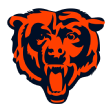
2. Chicago Bears (from 49ers)
Mitchell Trubisky, QB, North Carolina | Highlights
Why they did it: To make a splash and hopefully lock up their quarterback of the future. Mike Glennon is making $16 million guaranteed in 2017, but he won’t be the starter for the long term. Trubisky is the future -- ready or not.
Biggest question: Is Trubisky really worth the second overall pick? He started only 13 games in college. The Bears passed on quality defensive prospects such as Solomon Thomas and Jamal Adams to take a player with numerous question marks. Risky move.
-- Jeff Dickerson
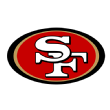
3. San Francisco 49ers (from Bears)
Solomon Thomas, DL, Stanford | Highlights
Why they did it: The Niners had the worst run defense in the NFL last season and were fifth worst in the NFL in pressures generated per dropback. Thomas is capable of helping them improve in both areas in new coordinator Robert Saleh's 4-3 defensive scheme. Beyond that, Thomas is considered one of the cleanest picks in the draft and the type of guy who can help establish the culture that general manager John Lynch and coach Kyle Shanahan seek.
Biggest question: Where will he line up? While the Niners aren't so strong at any position on the defensive line that anyone's spot is safe, the Niners could really use a true right defensive end (also known as the "Leo" or "Elephant" in Saleh's scheme). Thomas has versatility and projects best as a left defensive end on running downs and a 3-technique defensive tackle on passing downs, according to scouts I spoke with before the draft. But if Thomas can prove to be an effective pass-rusher from the other defensive end spot, it would be a boon for the Niners.
-- Nick Wagoner
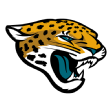
4. Jacksonville Jaguars
Leonard Fournette, RB, LSU | Highlights
Why they did it: The Jaguars have been the NFL's worst rushing team over the past five seasons (92.1 yards per game). Last season, T.J. Yeldon and Chris Ivory both averaged less than 4 yards per carry. The 6-foot, 228-pound Fournette ran for 3,840 yards and 40 touchdowns and averaged 6.2 yards per carry in three seasons at LSU, so he was incredibly productive in arguably the best conference in the country (SEC). He gives the Jaguars a physical back who fits the ball-control, play-action offense that coach Doug Marrone wants to run. The Jaguars are hoping for an Ezekiel Elliott-type impact, though Fournette certainly won’t be running behind the caliber of line that Elliott did last season.
Biggest question: Fournette had an ankle injury that lingered throughout the 2016 season (he missed five games), and there’s some concern that will be something he’ll have to deal with as a pro. Fournette also struggled against Alabama’s defense: 145 yards and one TD on 57 carries in three games. Fournette is not exactly an elusive back. He’s a physical runner -- you can waste a lot of time on YouTube watching him run over guys -- and those kind of backs have a much shorter shelf life.
-- Mike DiRocco
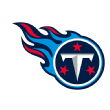
5. Tennessee Titans (from Rams)
Corey Davis, WR, Western Michigan | Highlights
Why they did it: They Titans long have lacked a legitimate No. 1 receiver, and Davis has drawn comparisons to players such as Terrell Owens and Dez Bryant. He’s an explosive player coming off an ankle injury whom the Titans clearly have judged to be fast enough. They aren’t concerned with speed or size as much as they are concerned with dependable routes, minimal drops and solid blocking. Davis is 6-foot-3, 218 pounds and athletic.
Biggest question: How does he run? The Titans saw plenty of film on him, but an ankle injury prevented the league from getting an official 40-yard time on him. The other concern is that he didn’t play against premier competition in the MAC. But the production at that level was superb: 326 catches, 5,212 yards and 51 touchdowns in four seasons -- and that’s enough for GM Jon Robinson to project him as a great weapon for quarterback Marcus Mariota.
-- Paul Kuharsky

6. New York Jets
Jamal Adams, S, LSU | Highlights
Why they did it: The Jets’ pass defense stunk last season -- 30 touchdown passes, only eight interceptions. Adams was the consensus No. 1 safety in the draft, a terrific value with the sixth pick. He will be an immediate starter, probably alongside Calvin Pryor. Adams isn’t a ball hawk, a la Malik Hooker, but he’s a sideline-to-sideline defender. He could be the Jets’ version of Landon Collins. Scouts describe him as a natural-born leader and that will help a locker room sorely lacking in that area.
Biggest question: QB Deshaun Watson was still on the board, so the Jets can expect eternal second-guessing if he develops into a winning quarterback. In this case, they made the wise move. Watson would’ve been a reach at No. 6; he has great intangibles and a winning pedigree, but he hardly was a sure thing. The Jets will devote 2017 to developing Christian Hackenberg. If he bombs, they can draft a quarterback next year.
-- Rich Cimini

7. Los Angeles Chargers
Mike Williams, WR, Clemson | Highlights
Why they did it: Keenan Allen is the team’s No. 1 receiver, but he’s coming off ACL surgery that forced him to miss most of the 2016 campaign. Tyrell Williams and Travis Benjamin also missed time with injuries last season, so Williams gives veteran quarterback Philip Rivers another playmaker who can win contested catches on the perimeter.
Biggest question: Williams suffered a neck injury two years ago that forced him to miss the entire 2015 season, but he came back to play every game in 2016. Speed, crisp route running and creating separation also are things Williams will have to work on so he can consistently get open at the next level.
-- Eric Williams

8. Carolina Panthers
Christian McCaffrey, RB, Stanford | Highlights
Why they did it: The Panthers hadn’t drafted a running back in the first round since Jonathan Stewart in 2008. They needed a future replacement for Stewart (30), whose contract runs through 2018. But more importantly they needed a dynamic, speedy, change-of-pace player who could be a threat as a receiver out of the backfield to complement Stewart and take the pressure off quarterback Cam Newton to run. Few backs in this draft are more dynamic -- as well as versatile -- as the son of former NFL wide receiver Ed McCaffrey.
Biggest question: Durability. At 5-foot-11, 202 pounds, McCaffrey’s ability to handle the load of a three-down back has come into question. General manager Dave Gettleman didn’t seem concerned before the draft, reminding us that McCaffrey had 590 carries and 82 catches over the past two seasons. “He certainly has showed he can carry the load at Stanford,’’ Gettleman said. But the bigger question may be how Gettleman passed on two stellar defensive players, Alabama defensive end Jonathan Allen and Ohio State safety Malik Hooker. It shows just how dedicated he is to turning this offense around.
-- David Newton

9. Cincinnati Bengals
John Ross, WR, Washington | Highlights
Why they did it: The Bengals desperately needed an element of speed in their wide receiver group. Although they drafted Tyler Boyd in the second round last year, Boyd cannot match the record 4.22-second 40-yard-dash speed that Ross brings. Ross can immediately bring another element to an offense that relied too much on A.J. Green last year and was at times completely stagnant. Last season, Ross had 51 receptions that either went for a touchdown or a first down, according to ESPN Stats & Info. He will be half of a formidable duo next to Green.
Biggest question: Ross’ speed is unquestionable, but what about his medical history? At 5-foot-11, 188 pounds, there likely will be questions about his durability. Ross missed the 2015 season with a meniscus and ACL injury. He also has had labrum surgery. The Bengals might have to be careful with how much they use him in the years to come.
-- Katherine Terrell

10. Kansas City Chiefs (from Bills)
Patrick Mahomes II, QB, Texas Tech | Highlights
Why they did it: The Chiefs haven’t drafted a quarterback in the first round since 1983, so it was time. The Chiefs can afford Mahomes the luxury of a year or two on the bench to learn his craft because Alex Smith has two more seasons remaining on his contract. The Chiefs, who moved up from 27 to 10 in a trade with the Buffalo Bills to get him, believe Mahomes has the ability to be their long-term solution at quarterback.
Biggest question: The Chiefs relinquished their first-round pick next year and a third-rounder this year to move up to get Mahomes. That’s not a huge cost if Mahomes develops into a productive player, but it is if he’s a bust. Can the Chiefs get a return on this investment? Mahomes played in a spread offense at Texas Tech, and quarterbacks coming from the spread don’t have a good track record in developing into productive pro players.
-- Adam Teicher

11. New Orleans Saints
Marshon Lattimore, CB, Ohio State | Highlights
Why they did it: The Saints’ desire to land a top cornerback was obvious. They had the No. 32 pass defense in the NFL last season, and they spent this offseason considering trades for Patriots CB Malcolm Butler and Rams CB Trumaine Johnson after making a strong run at Josh Norman last spring. They must be thrilled that they held off on overpaying for those veterans after the top cornerback fell into their lap after two quarterbacks, two receivers and two running backs went in the top 10. Plus, they love Ohio State players after scoring with WR Michael Thomas and S Vonn Bell in Round 2 last year.
Biggest question: Lattimore comes with injury concerns after he missed much of his first two seasons at Ohio State with significant hamstring issues. He was healthy last year and played great with four interceptions. Then he ran the 40-yard dash in 4.36 seconds at the scouting combine. But ESPN’s Jon Gruden warned that he still has some developing to do after just one full year of college experience.
-- Mike Triplett

12. Houston Texans (from Browns)
Deshaun Watson, QB, Clemson | Highlights
Why they did it: The Texans’ quarterback play -- and offense overall -- was abysmal last season. They will return most of their AFC South championship team next season and are in great position to win now. Watson had a great pre-draft visit with the Texans, who clearly think they have found their guy to end the quarterback carousel that has plagued the team since 2002.
Biggest question: Is Watson considered the favorite to start in Week 1? General manager Rick Smith and head coach Bill O’Brien have reiterated this offseason the Texans were comfortable with Tom Savage as their 2017 starting quarterback. They also have said it’s tough for a rookie quarterback to start in this league. But the Texans gave up their 2017 and 2018 first-round picks to draft Watson, so they clearly like what they have seen from the national champion quarterback. But what does that mean in 2017?
-- Sarah Barshop

13. Arizona Cardinals
Haason Reddick, LB, Temple | Highlights
Why they did it: Reddick is a multidimensional linebacker who can play inside, a need since Karlos Dansby is on a one-year deal. He also can contribute outside and rush the passer. He can be used in the Cardinals' three pass-rush sets and can be moved all over the field.
Biggest question: How much will he actually play with Arizona having two elite pass-rushers in Chandler Jones and Markus Golden, and sitting behind Dansby?
-- Josh Weinfuss

14. Philadelphia Eagles
Derek Barnett, DE, Tennessee | Highlights
Why they did it: The Eagles needed a pass-rusher to fuel a Jim Schwartz scheme that is dependent on the front four getting home without the blitz, and they landed one of the most productive in college football. Barnett finished his career at Tennessee as the school's all-time sacks leader (32), passing former Eagle and first-ballot Hall of Famer Reggie White.
Biggest question: There is some concern about how well Barnett’s game will translate to the next level. His athletic measurables aren’t elite. Some evaluators had a difficult time making sense of how he was able to rack up such impressive stats.
-- Tim McManus
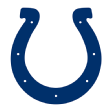
15. Indianapolis Colts
Malik Hooker, S, Ohio State | Highlights
Why they did it: Safety was an area the Colts needed to upgrade after not bringing back veteran Mike Adams earlier in the offseason. Second-year player T.J. Green struggled during his rookie season. Clayton Geathers, the most skilled safety on the roster, missed seven games last season because of injuries. Veteran Darius Butler made the transition from cornerback to safety this offseason.
Biggest question: The Colts had bigger issues at pass-rusher. Defensive end Charles Harris and linebacker Tak McKinley were still available. Alabama teammates Reuben Foster and Jonathan Allen, both projected top-10 picks, also were on the board.
-- Mike Wells

16. Baltimore Ravens
Marlon Humphrey, CB, Alabama | Highlights
Why they did it: The Ravens continue their trend of building one of the NFL's top secondaries. Baltimore takes the draft's second-best cornerback in Humphrey after signing safety Tony Jefferson and cornerback Brandon Carr in free agency. It's interesting that Humphrey is often compared to Jimmy Smith, the last cornerback selected by the Ravens in the first round (2011).
Biggest question: Why didn't the Ravens address a more immediate need on defense? The Ravens could've selected two other Alabama prospects -- defensive end Jonathan Allen or inside linebacker Reuben Foster -- who would've filled voids in the starting lineup. It's surprising Baltimore didn't trade back in the first round and get more picks.
-- Jamison Hensley

17. Washington Redskins
Jonathan Allen, DE, Alabama | Highlights
Why they did it: The Redskins largely have ignored their defensive line in the draft for years, last selecting a defensive lineman in the first round in 1997 (Kenard Lang). Allen has top-five talent and can impact the run and pass. He’s only 286 pounds, but he runs well and can play end in base and nickel sub-packages. He can impact the pass game.
Biggest question: How serious are Allen’s health issues? He needed surgery on his left shoulder in 2014 and hurt it again a year later, needing more surgery in January 2016. There are some concerns about his size.
-- John Keim

18. Tennessee Titans
Adoree Jackson, DB, USC | Highlights
Why they did it: Cornerback is the biggest hole on the Titans' roster, even after the free-agent addition of Logan Ryan. Jackson is a phenomenal athlete who ran a blazing 4.42-second 40 and has a track background that includes a 10.38-second 100-meter dash. That means he can run with blazers and catch up to them if they break beyond him. The Titans have added a great deal on special teams, and Jackson was PFF’s highest-rated college returner in 2016. Over his career, he averaged 27.1 yards per kickoff return and 12.6 yards on 46 punt returns, with a total of eight TD returns.
Biggest question: Is he big enough? He’s 5-foot-10, 186 pounds, and the Titans want their corners to be willing and able tacklers. While scouts and analysts say they saw good growth in Jackson as a senior, players like receiver Corey Davis, the Titans' No. 5 pick, should have a chance to post him up and win. That might mean Jackson starts off in the slot, or shifts there in nickel.
-- Paul Kuharsky

19. Tampa Bay Buccaneers
O.J. Howard, TE, Alabama | Highlights
Why they did it: Tight end Cameron Brate may have tied for a league-leading eight touchdowns, but the Bucs want a tight end who can serve as an in-line blocker and vertical threat. Howard fits the bill and gives Jameis Winston another big red zone target.
Biggest question: The only concern about Howard has been his production. Alabama coach Nick Saban used Howard quite a bit as a blocker in the run game, which took away from Howard’s availability as a pass-catcher.
-- Jenna Laine

20. Denver Broncos
Garett Bolles, T, Utah | Highlights
Why they did it: Western Kentucky guard/tackle Forrest Lamp and Alabama linebacker Reuben Foster would be two players who carried higher draft grades, but Bolles is one of the best left tackle prospects on the board. He’s athletic, moves well and plays with a fierceness offensive line coaches love.
Biggest question: Sometimes Bolles’ emotions get the best of him and he takes silly penalties and costs his team field position. There was some feeling among talent evaluators that defensive linemen would bait him, especially early in his career, to see if he can play with some composure once the play is over.
-- Jeff Legwold

21. Detroit Lions
Jarrad Davis, LB, Florida | Highlights
Why they did it: The Lions needed to add speed and talent to the front seven and had two strong options to address their biggest need: linebacker. Reuben Foster and Jarrad Davis both made sense, but Davis is the cleaner player. He’ll likely be a starter, either on the outside replacing DeAndre Levy or in the middle, pushing Tahir Whitehead to the outside.
Biggest question: There will be some questions as to why the Lions went with Davis over Foster, particularly if Foster ends up being a top-level player. The ankle injury Davis dealt with throughout his 2016 season also could be a concern.
-- Michael Rothstein

22. Miami Dolphins
Charles Harris, DE, Missouri | Highlights
Why they did it: The Dolphins clearly needed help for their 29th-ranked defense from a year ago. Harris will add youth, athleticism and playmaking ability to an aging defensive end group. Harris also has the versatility to play outside linebacker at the next level.
Biggest question: Was it wise to pass up former Alabama linebacker Reuben Foster? He was a projected top-10 talent available at No. 22 because of character concerns. Foster had a diluted urine sample at the NFL combine and a shoulder injury. However, Foster would have been an ideal fit to help Miami’s linebacker group.
-- James Walker

23. New York Giants
Evan Engram, TE, Mississippi | Highlights
Why they did it: He’s a dynamic, super-athletic tight end who should add a new dimension to the Giants' offense. He has 4.42 speed, can get down the field and is a matchup nightmare.
Biggest question: Engram isn’t known as much of a blocker. He’s more of a slot receiver from the tight end position. He’s not going to be much help to the league’s 29th-ranked rushing attack.
-- Jordan Raanan

24. Oakland Raiders
Gareon Conley, CB, Ohio State | Highlights
Why they did it: The Raiders had only the 24th-ranked passing defense a year ago and allowed a league-high 61 completions of at least 20 yards despite handing out big contracts to cornerbacks Sean Smith and David Amerson. They also allowed former first-round pick DJ Hayden to walk in free agency, so they need a slot corner. Conley had four interceptions and eight pass breakups at Ohio State last season, so he addresses a need.
Biggest question: Will he be around? Conley has been accused of sexual assault, partly why he lasted until No. 24. While no charges have been filed, the pick seemingly goes against the Raiders’ recent run of staying away from players with questionable baggage. Still, Conley has maintained his innocence -- taking and passing a polygraph test, per his agent -- and Raiders general manager Reggie McKenzie said he likes to go with his "gut" on certain players.
-- Paul Gutierrez

25. Cleveland Browns (from Texans)
Jabrill Peppers, S, Michigan | Highlights
Why they did it: Safety was a glaring need when the draft started and Peppers fills that need. He can play strong safety, he can tackle and return kicks. Peppers is more of a tackler than a cover guy, so he'll need to refine his safety skills. But he adds energy, return ability and a physical presence to the secondary.
Biggest question: In college, Peppers was used all over the field -- safety, linebacker, cornerback, running back and even receiver. He also returned punts and kicks. He'll now have to learn to play strong safety in the pros and refine his cover skills. The half-full view is Peppers had to spread himself too thin with Michigan and should get better when he focuses on one position. The concern: Will he be good enough at any one position to succeed, and will he grow in coverage to be able to play against NFL tight ends?
-- Pat McManamon

26. Atlanta Falcons (from Seahawks)
Takkarist McKinley, LB, UCLA | Highlights
Why they did it: The Falcons needed another edge rusher to pair alongside Vic Beasley Jr. They traded up from the 31st overall pick, swapping first-round picks with Seattle and trading this year’s third-round pick and seventh-round pick to the Seahawks. Offense wasn’t the primary issue for the Falcons, although the thought of adding Forrest Lamp to potentially start at right guard had to be tempting. Dan Quinn is a defensive-minded coach and always talks about everything starting up front with the pass rush. McKinley has a high motor and the speed to make plays. He and Beasley together could be a devastating combo.
Biggest question: McKinley is coming off shoulder surgery and might not be ready immediately. And such a surgery makes him somewhat of a risk. But, obviously, the Falcons felt comfortable with his medical report and feel confident that he’ll be able to contribute during the 2017 season.
-- Vaughn McClure

27. Buffalo Bills (from Chiefs)
Tre’Davious White, CB, LSU | Highlights
Why they did it: Stephon Gilmore had $65 million reasons to bolt to New England, leaving the Bills with a gaping hole at cornerback. Buffalo likes 2015 second-round pick Ronald Darby and was encouraged last season by 2016 sixth-round pick Kevon Seymour, but it needed more help at the position. White is considered a good fit for Sean McDermott and Leslie Frazier's zone-coverage scheme.
Biggest question: The Bills addressed one of their top positions of need with this pick, but fans ultimately will judge this pick based on the success of Patrick Mahomes II in Kansas City. Buffalo traded with the Chiefs from No. 10 to No. 27, picking up a 2017 third-round pick and 2018 first-round pick in the process, but it left Mahomes and Deshaun Watson on the board. If either becomes a franchise quarterback, this pick will be questioned.
-- Mike Rodak
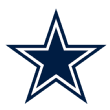
28. Dallas Cowboys
Taco Charlton, DE, Michigan | Highlights
Why they did it: The Cowboys’ top priority in the offseason has been to address the pass rush. Charlton’s sack total increased every year with 9.5 in 2015, his lone year as a full-time player. He can play right end and left end and potentially could move inside on passing downs. Charlton was a player the Cowboys liked throughout the draft process.
Biggest question: Was Charlton their top pass-rusher, or was he the best guy remaining with Takkarist McKinley and Charles Harris going before the Cowboys picked? Is he a "war daddy" Jerry Jones craves, or will he need time?
-- Todd Archer

29. Cleveland Browns (from Packers)
David Njoku, TE, Miami (Fla.) | Highlights
Why they did it: The Browns need receivers, playmakers and guys who can score. Njoku had eight touchdowns last season for Miami and had 64 receptions the past two seasons. He also averaged 16.2 and 17.2 yards per catch. Hue Jackson said in March the tight end position needed an upgrade; they traded up in the first round to get Njoku.
Biggest question: It's the same question that's been asked about every tight end or receiver who has joined the Browns the past few seasons: Who's the quarterback? The Browns traded out of taking Deshaun Watson and are looking at a competition between Brock Osweiler and Cody Kessler at the team's most important position.
-- Pat McManamon

30. Pittsburgh Steelers
T.J. Watt, LB, Wisconsin | Highlights
Why they did it: It was no secret the Steelers were looking for pass-rush help. Watt can develop into an eventual replacement for James Harrison. He brings, size (6-foot-4, 252 pounds), athleticism and tenacity to Pittsburgh. Overcoming a knee injury and a position change from tight end, Watt recorded 11.5 sacks in his only full season as a collegiate pass-rusher.
Biggest question: Why did the Steelers feel Watt -- whom some NFL personnel evaluators gave a second-round grade -- was a better option than Washington corner Kevin King, Alabama linebacker Reuben Foster and other defensive playmakers? The perceived knock on Watt is he’s not a quick-twitch athlete, which the Steelers coveted in former first-round linebacker Bud Dupree. Does Watt have the NFL skill set to overcome that?
-- Jeremy Fowler

31. San Francisco (from Seahawks)
Reuben Foster, LB, Alabama | Highlights
Why they did it: More than anything, the Niners believed Foster was one of the most talented players in the draft and saw an opportunity to get him late in the first round while surrendering only a fourth-round pick acquired from Chicago to land him. Foster is the type of hard-nosed linebacker the Niners have been building defenses around for years, and they view him as the next in an evolving lineage that includes Patrick Willis and NaVorro Bowman.
Biggest question: Foster comes with a few questions, most of which have little to do with football. He tested positive for a diluted urine sample at the scouting combine and was involved in an argument with a hospital worker during his medical check in Indianapolis. Perhaps more pressing is a shoulder issue that also contributed to his slide in the first round.
-- Nick Wagoner

32. New Orleans Saints (from Patriots)
Ryan Ramczyk, T, Wisconsin | Highlights
Why they did it: The Saints ended the first round quietly by filling one of their underrated needs. Starting right tackle Zach Strief is 33 years old, and coach Sean Payton made it clear he wanted to get a lineman at some point in this draft. Ramczyk (6-6, 310) was a first-team All-American after playing just one year at Wisconsin and was a projected first-rounder.
Biggest question: The biggest issue with this pick is it won’t help a defense that ranked 31st in points allowed last season. But the Saints weren’t going to force themselves to use all five of their picks in the first three rounds on defense. The other concerns with Ramczyk are he played just one year at the FBS level after transferring from UW-Stevens Point and battled a hip injury last season.
-- Mike Triplett
































